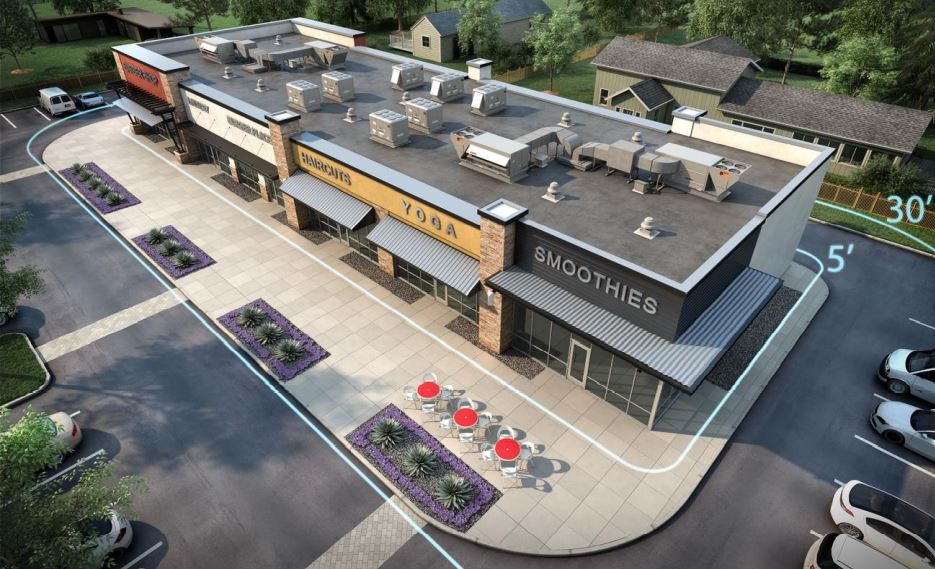Choosing the right fire-resistant plants and materials can beautify your property and also help reduce your wildfire risk.
Best Practice
For the best protection, keep this area clear of all combustible materials. Use noncombustible hardscapes such as concrete sidewalks, decorative gravel (rock mulch), and natural stones. The best option is to keep the area clear of plants, especially if you have combustible siding such as wood or vinyl.

Next Best Option
If you have noncombustible siding such as fiber-cement and you choose to have plants in this zone, limit your selection to varieties that grown no more than 12 inches in height. Be sure to water and care for any vegetation in this zone as any plant can become highly flammable if it is dead, dried out, or not well maintained.
Suitable Plants
| African Daisy* Gazania spp. USDA Hardiness Zone: 4-10 Height: 6”-12” Blue Chalksticks Coopertone Stonecrop Creeping Phlox Dead Nettle* Dianthus Dwarf Plumbago |
Dwarf Tickseed Coreopsis auricualata ‘Nana’ USDA Hardiness Zone: 4-9 Height: 6”-8” Evening Primrose* Grayleaf Cranesbill Japanese Pachysandra* Jelly Bean Plant Kinnikinnick Mahala Mat Mexican Hens and Chicks |
Purple Iceplant Delosperma cooperi USDA Hardiness Zone: 5-10 Height: 1”-4” Red Creeping Thyme Rock Cress Rozanne Cranesbill* Snow-in-Summer* Speedwell Sun Rose* |
- Include at least 4 feet of space between plant/flower beds.
- For beds and elevated planters with different plant varieties, base spacing on the tallest plant’s maximum height and make sure the next bed or planter is at least twice this length away if possible. Also consider the maximum width of each plant to avoid creating very dense vegetation and to ensure adequate spacing between beds and/or planters.
- Consider using hardscape materials between beds or planters.
- Avoid creating long, continuous beds which could act as a path for fire.
RECOMMENDED MATERIALS (WITHIN 30 FEET OF YOUR BUILDING)
- Avoid combustible materials such as pine straw and wood mulch.
- Use noncombustible hardscapes such as concrete sidewalks, decorative gravel (rock mulch), and natural stones such as Mexican Beach pebbles

Suitable Plants
| Basket-of-Gold Aurinia saxatilis USDA Hardiness Zone: 3-7 Height: 8”-18” Spread: 1’-2’ Bearded Iris Blanket Flower Blue Flax Blue Glow Agave Chives Coneflower |
Daylily Hemerocallis species USDA Hardiness Zone: 3-9 Height: 1’-4’ Spread: 1’-3’ Deliphinium Heartleaf Bergenia Hosta / Hosta Lily Oriental Poppy Penstemon or Beardtongue Prairie Coneflower / Mexican Hat |
Salvia / Sage Salvia species USDA Hardiness Zone: 4-9 Height: 18”-28” Spread: 24”-34″ Sea Thrift Sedges Sun Rose Tickseed Yarrow Yucca |
Shrubs
Space between shrubs should be a minimum of 2 times the peak growth height of the shrub.
| Blue-Mist Spirea Caryopteris x clandonensis USDA Hardiness Zone: 5-10 Spacing: 10’+ / Height: 3’-5’ Spread: 3’-5’ Boxwood Creeping Holly Dwarf Burning Bush Grape Holly Lilac |
Mockorange Philadelphus species USDA Hardiness Zone: 4-8 Spacing: 16’+ / Height: 6’-8’ Spread: 6’-8’ Oceanspray Orchid Rockrose Redosier Dogwood Rhododendron Russian Sage Salal |
Shrub Roses Rosa species USDA Hardiness Zone: 2-9 Spacing: 12’+ / Height: 2’-6’ Spread: 2’-6’ Snowberry Compact American Cranberry Western Azalea Western Sandcherry Wood’s Rose Western Spirea |
Tall Shrubs & Trees
- For the best protection, tall shrubs and trees are not recommended within 30 feet of the building. Also keep this area irrigated.
- For areas beyond 30 feet, such as in parking lot areas, use this list to guide your tree and shrub selection.
- Do NOT plant within the Building Ignition Zone or any area where the tree may eventually overhang your roof at its largest size. This could lead to a buildup of flammable debris on your roof. Additionally, the tree or shrub could serve as a large fuel source right next to your building. It could also fall on your building in a windstorm. Over time, root systems may also puncture your building’s underground plumbing and even cause foundation problems.
| Amur Maple Acer ginnala USDA Hardiness Zone: 2-8 Spacing: > 10’ / Height: 15’-20’ Spread: 15’-20’ Big Leaf Maple Birch Canada Red Chokecherry Chokecherry Common Hackberry Crabapple European Beech Fernleaf Buckthorn Green Ash |
Hawthorn Crataegus species USDA Hardiness Zone: 4-7 Spacing: > 10’ / Height: 15’-20’ Spread: 10’-15’ Note: Given its relatively short height, consider using 2 times the height as proper spacing, and keep branches pruned above the ground. Horsechestnut Kentucky Coffee Tree Mountain Alder Mountain Ash Pin Oak Purple Robe Locust Quaking Aspen Red Alder Red Oak Rocky Mountain Maple |
Sumac Rhus species USDA Hardiness Zone: 3-9 Spacing: > 30’ / Height: 2’-20’ Spread: 4’-15’ Tallhedge Thornless Honeylocust Vine Maple Walnut Western Catalpa Western Larch Western Sycamore / California Sycamore White Ash White Oak |
FOR MORE INFORMATION
Contact your local extension office to get specific guidance for your climate or region.
Note that landscaping with fire-resistant plants is essential to making a meaningful reduction in the wildfire risk to your building; however, there is no guarantee this will eliminate all risk. To learn about additional steps you can take to reduce your building’s risk, visit Wildfire Ready–Business on disastersafety.org.
For steep-sloped commercial properties, follow guidance from Fire-Resistant Landscaping for Your Home.
